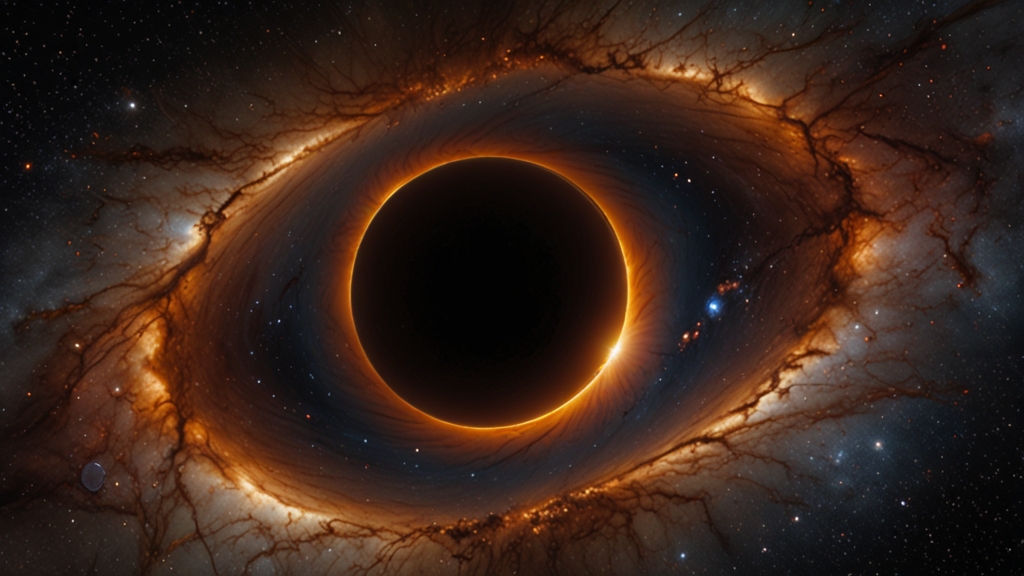Dawn of a New Era: The First Images of the Black Hole in Our Galaxy
In the annals of astronomical discoveries, few moments stand out as epochal shifts in our understanding of the universe. The recent unveiling of the first images of the supermassive black hole at the center of our galaxy - Sagittarius A* - marks one of these transformative milestones. This remarkable achievement not only broadens our cosmic horizons but also reaffirms the relentless human quest for knowledge.
The Journey to Capture the Invisible
For years, the existence of Sagittarius A* has been inferred through the gravitational effects it exerts on surrounding stars and gas clouds. Despite its massive presence, capturing an image of this cosmic giant presented a formidable challenge. The Event Horizon Telescope (EHT) collaboration, an international team of scientists, embarked on this daring quest. By linking radio observatories across multiple continents, they effectively created an Earth-sized telescope, capable of achieving the unprecedented resolution needed to reveal the shadow of a black hole.
A Glimpse into the Heart of Our Galaxy
The images released are nothing short of breathtaking. They reveal a bright ring-like structure radiating around a dark central region – the shadow of Sagittarius A*. These first-ever visualizations provide invaluable insights into the extreme environments near black holes and offer a direct confirmation of the theoretical predictions based on Einstein's General Relativity.
"Seeing the black hole in our own galaxy is profoundly exciting," remarked Dr. Shep Doeleman, project director of the EHT. "It's a testament to what we can achieve when scientists from around the world collaborate to push the boundaries of science and technology."
Technological and Scientific Triumph
The journey to capture these images was a feat of both technological prowess and scientific innovation. The EHT's numerous telescopes operated in perfect harmony, utilizing a technique known as Very Long Baseline Interferometry (VLBI). This allowed the team to combine data from different locations, synthesizing an image with extraordinary detail and clarity.
Moreover, the black hole’s location in the cluttered core of our galaxy posed additional obstacles. The team had to filter through a massive amount of interstellar material and noise to isolate the signal from Sagittarius A*. Advanced data processing algorithms and sophisticated modeling were indispensable in achieving this groundbreaking result.
Implications for Future Research
The successful imaging of Sagittarius A* opens new avenues for astronomical and physical inquiries. Scientists can now study the accretion disk dynamics, magnetic fields, and relativistic jets in greater detail. These findings will not only deepen our understanding of black holes but also inform future research on galaxy formation and evolution.
"With this image, we have crossed a critical threshold," said Dr. Katie Bouman, one of the key contributors to the imaging algorithms. "We can now test our models more rigorously and refine our theories with actual observational data."
Global Collaboration and the Spirit of Exploration
The success of the EHT collaboration epitomizes the power of global scientific cooperation. Over 200 researchers from dozens of institutions across the globe joined forces, transcending borders and disciplines. This collective effort not only highlights the interconnectivity of modern science but also sets a precedent for future large-scale, interdisciplinary research initiatives.
As we stand on the threshold of this new era, the images of Sagittarius A* serve as a potent reminder of humanity's unyielding curiosity and our innate desire to explore the unknown. They inspire not just the scientific community, but also people around the world, fostering a sense of shared wonder and intellectual adventure.
In conclusion, the dawn of this new era in astrophysics, marked by the first images of the black hole in our galaxy, represents a monumental leap in our quest to understand the universe. It is a symbolic beacon, illuminating the path toward future discoveries and reaffirming our collective resolve to penetrate the deepest mysteries of the cosmos.








